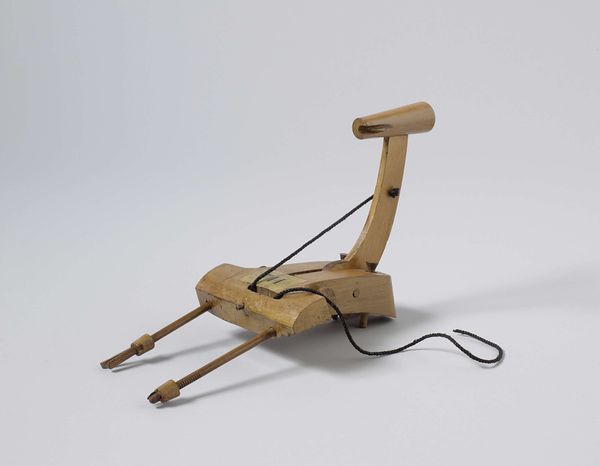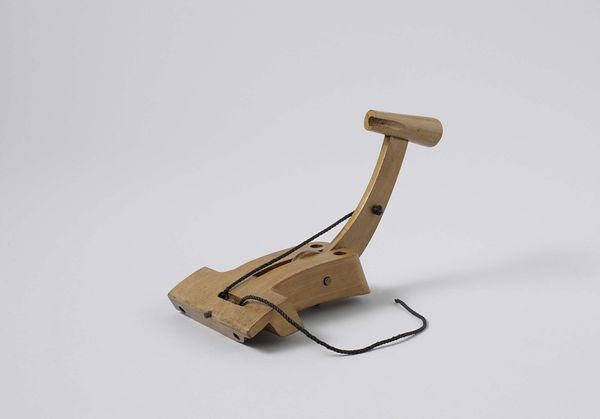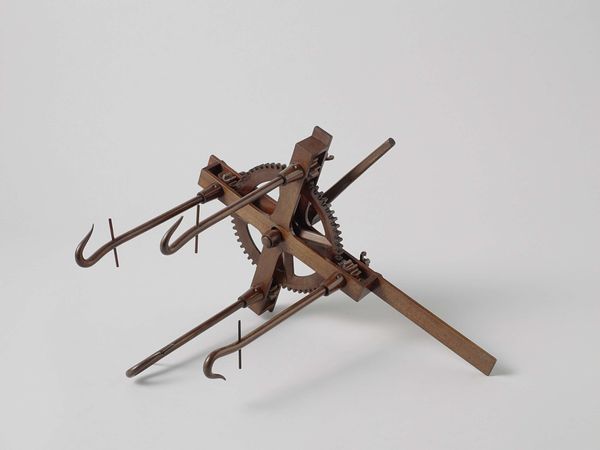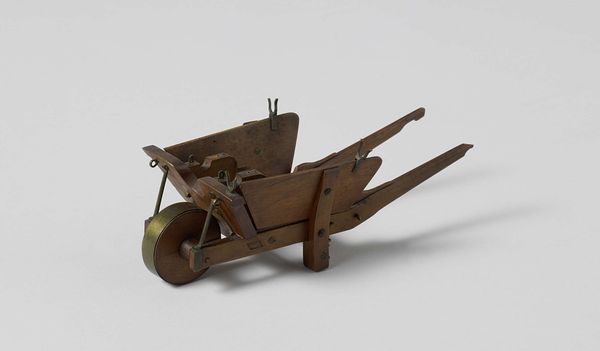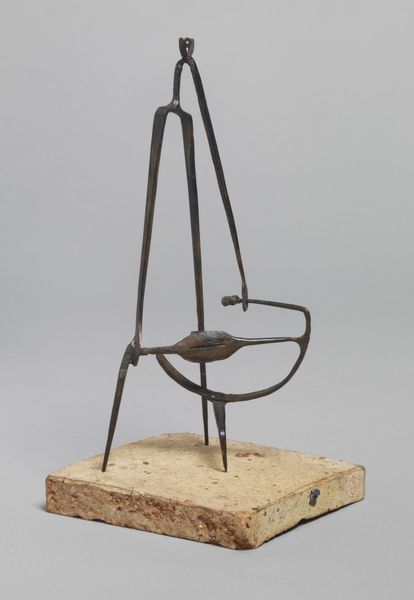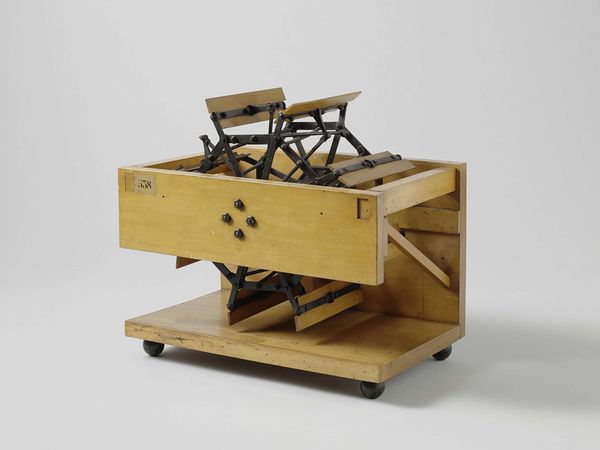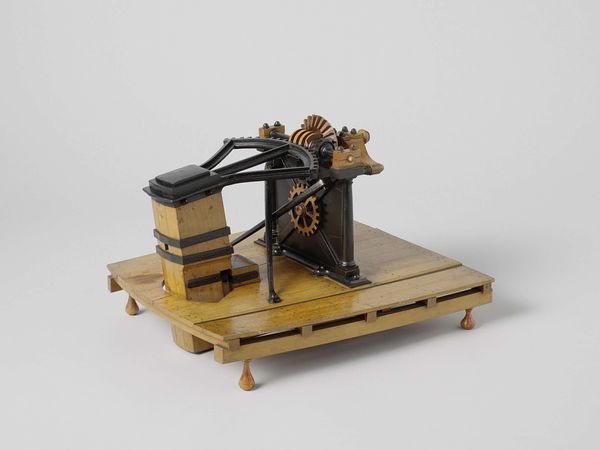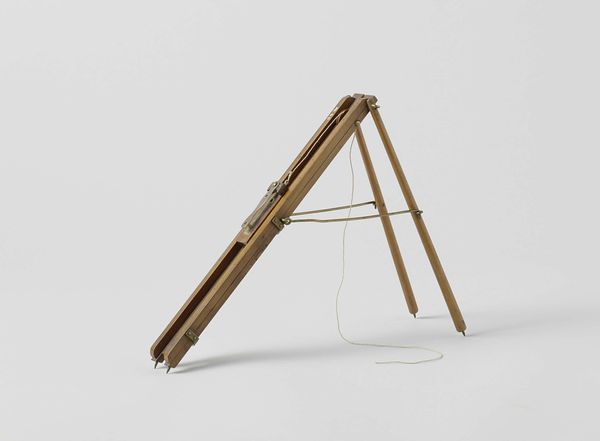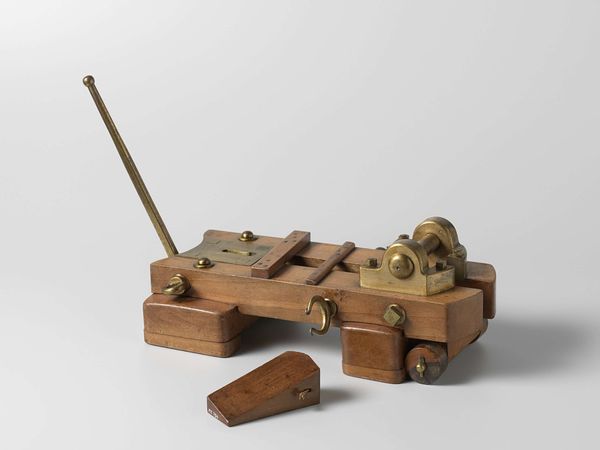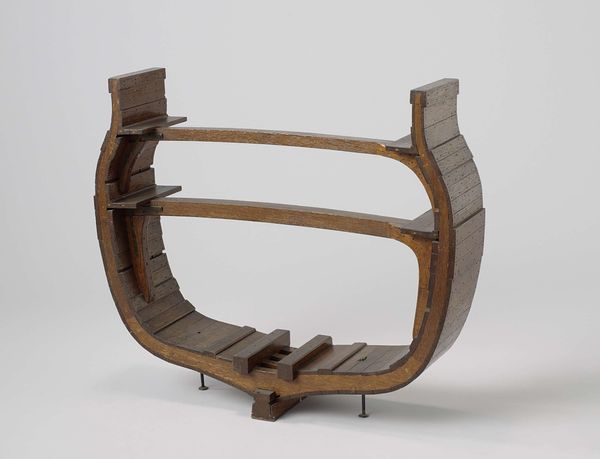
metal, wood
#
16_19th-century
#
metal
#
wood
#
realism
Dimensions: height 9.5 cm, width 16.7 cm, depth 14.5 cm
Copyright: Rijks Museum: Open Domain
Editor: Here we have an object titled "Model of a Gunlock (Percussion)", dating back to 1835, created by Rijkswerf Vlissingen, employing materials like wood and metal. It almost looks like an abstract sculpture to me. What do you make of it? Curator: Well, it immediately sparks questions about its function within the broader military-industrial complex of the 19th century. This isn’t just a pretty object. It’s a tool, or rather a representation of a tool, that played a part in colonial expansion and societal control. Editor: So, you're thinking about the power dynamics at play? Curator: Exactly! And Rijkswerf Vlissingen itself is a key element. As a state shipyard, they were central to Dutch naval power. This model was likely used for training, or perhaps for demonstration to elites—consider the politics of armament production and its visual representation. It's not neutral; it carries the weight of imperial ambition. What do you think about how realism figures here? Editor: I guess it's a paradox: this highly detailed object ultimately stands in for the real thing, right? It makes me wonder who had access to the ‘real’ thing and who only saw the model. Curator: Precisely! Access defines power, and this model visually reinforces those societal boundaries. It reflects both technological prowess and the structures that upheld it. Editor: That gives me a lot to consider – I will definitely not see these kinds of war artifacts in the same light. Curator: Me neither, thinking about it this way shows how artworks always carry socio-historical footprints, visible to the critical eye.
Comments
No comments
Be the first to comment and join the conversation on the ultimate creative platform.
